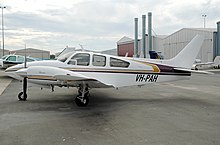TWA_Flight_553
TWA Flight 553
1967 aviation disaster in Concord Township, Ohio, US
Trans World Airlines (TWA) Flight 553 was a McDonnell Douglas DC-9-15 jet airliner, registration N1063T, operated by Trans World Airlines on March 9, 1967 between Pittsburgh, Pennsylvania and Dayton, Ohio. While descending toward Dayton about 29 miles (25 nmi; 47 km) from the airport, the flight collided in midair with a Beechcraft Baron, a small, general-aviation airplane, near Urbana, Ohio. All 25 aboard the DC-9 and the sole occupant of the Beechcraft were killed.[1]
This article includes a list of references, related reading, or external links, but its sources remain unclear because it lacks inline citations. (July 2013) |

